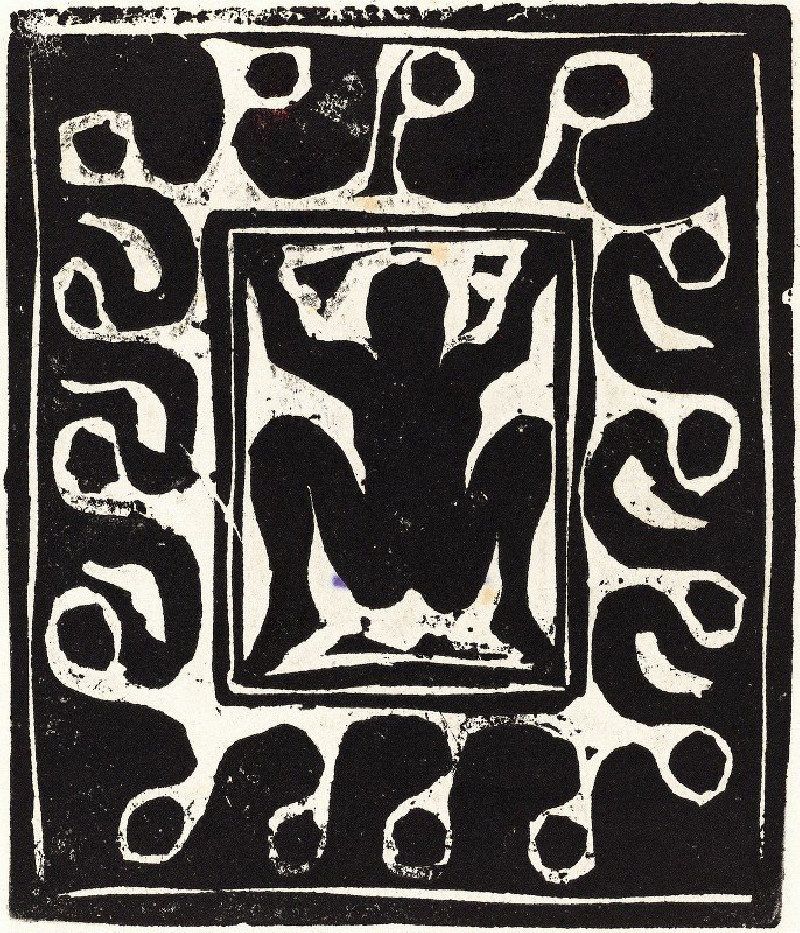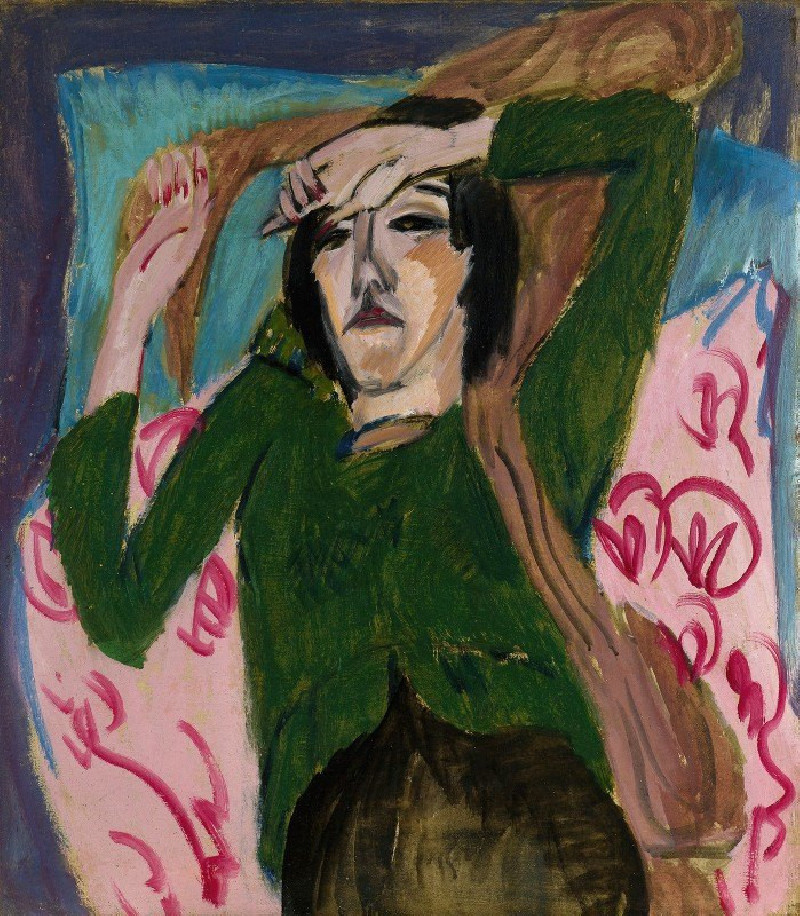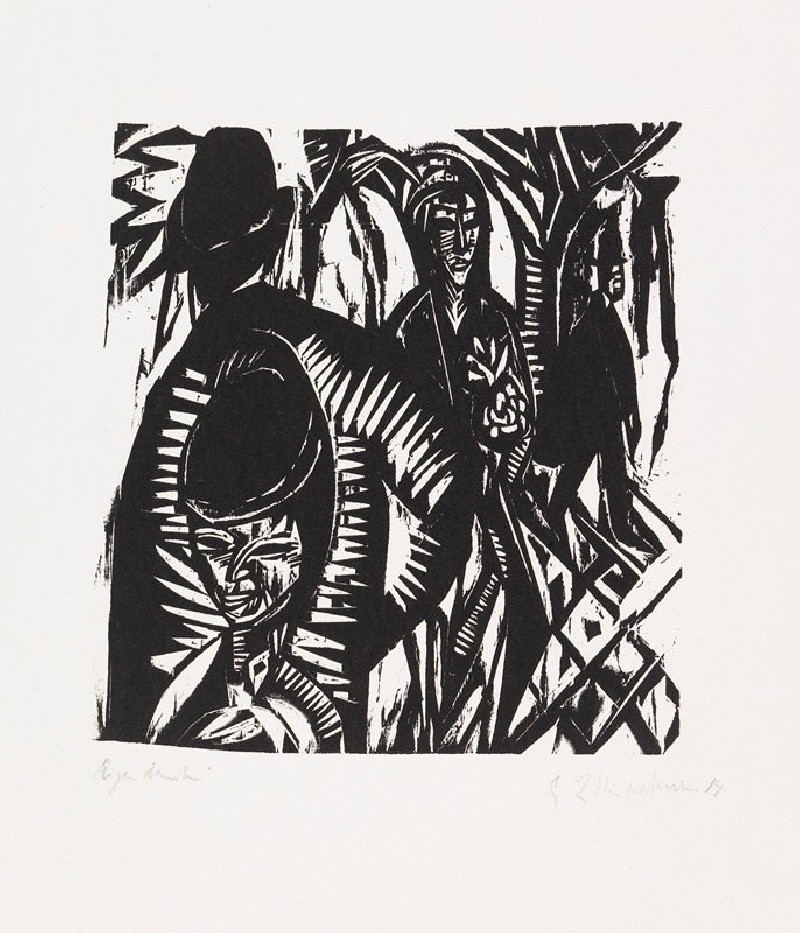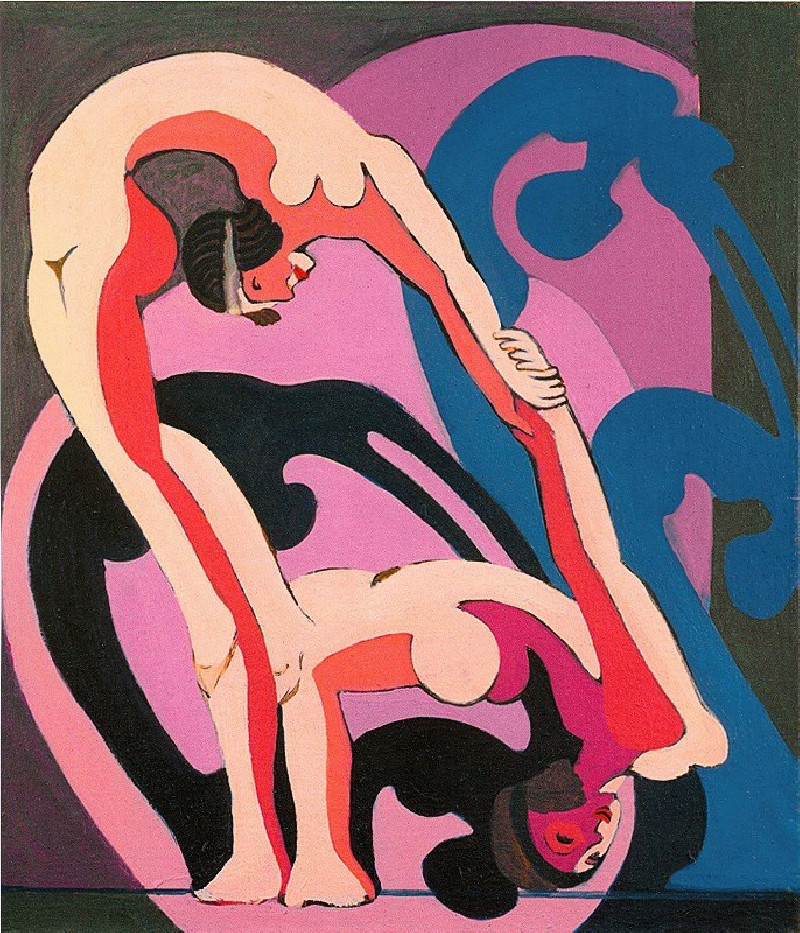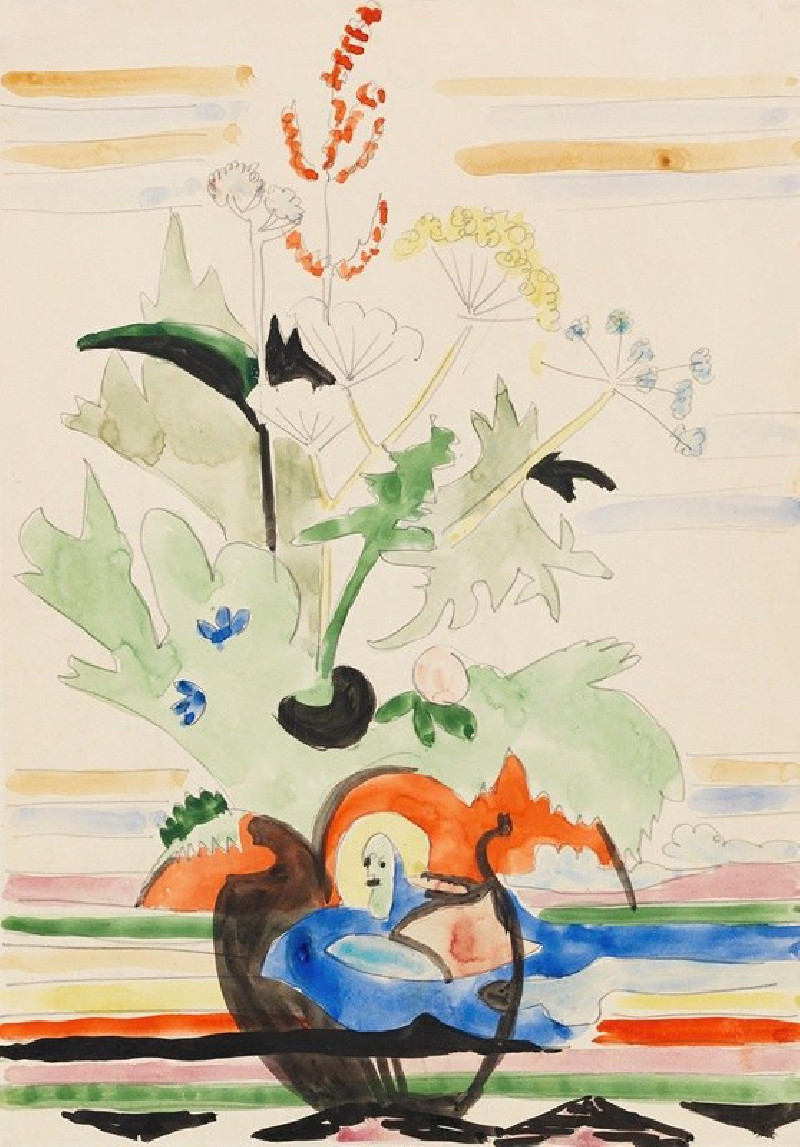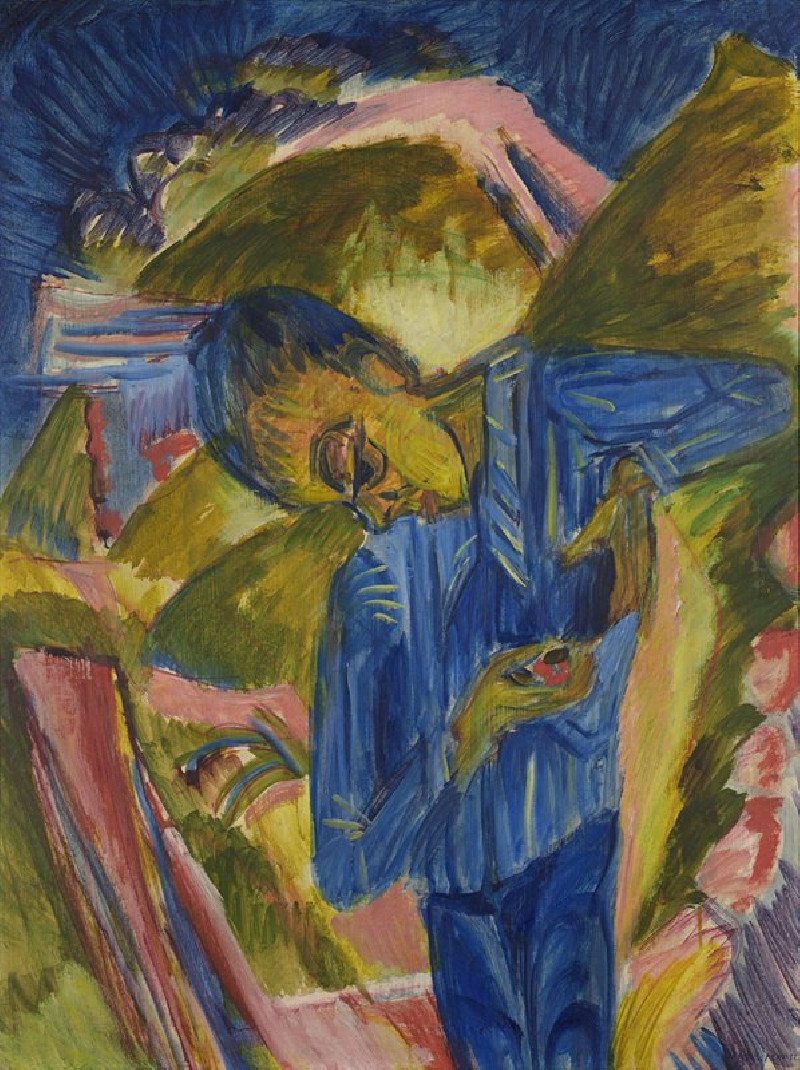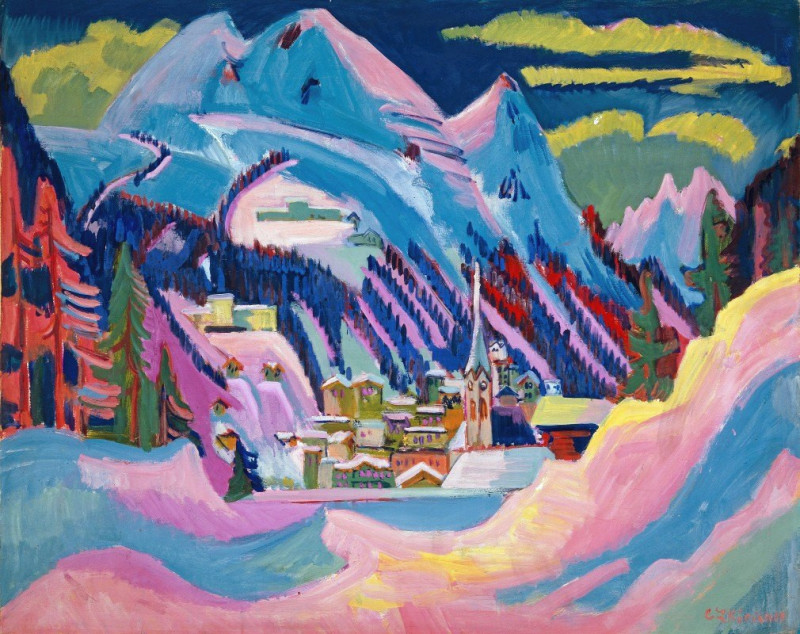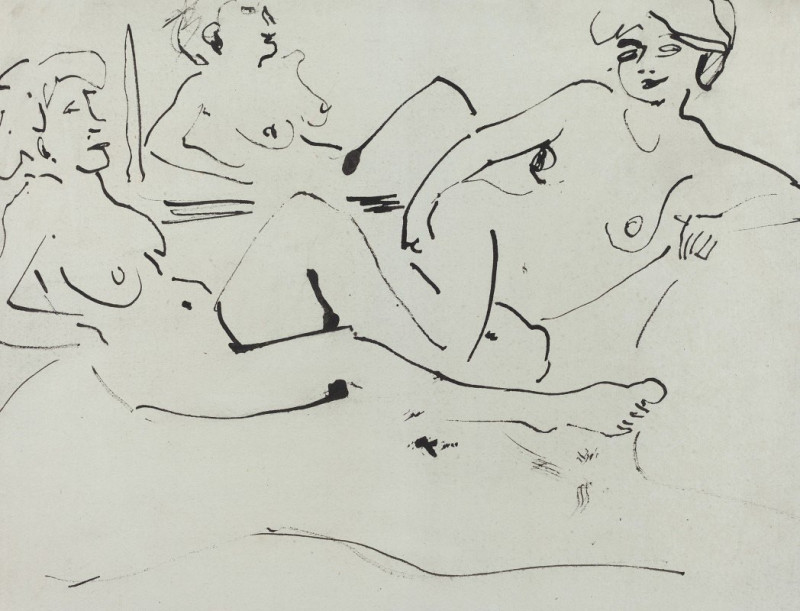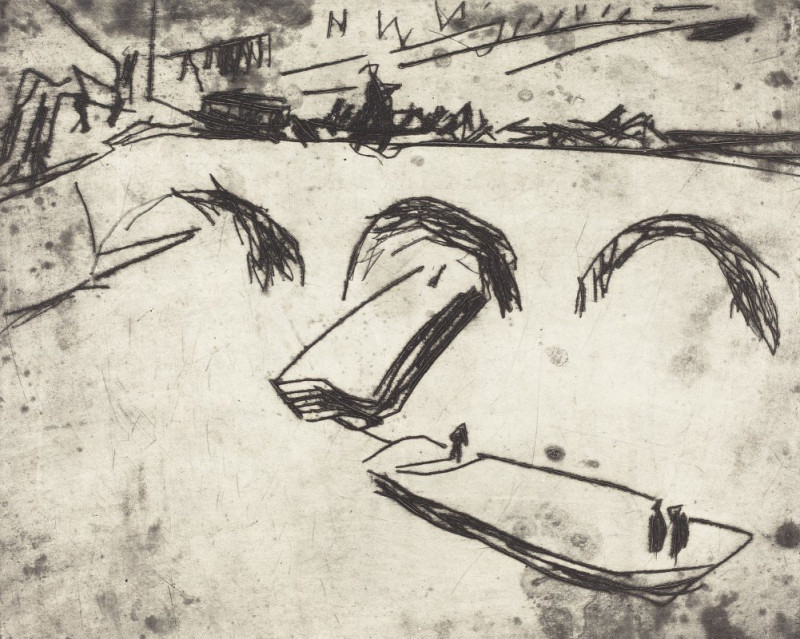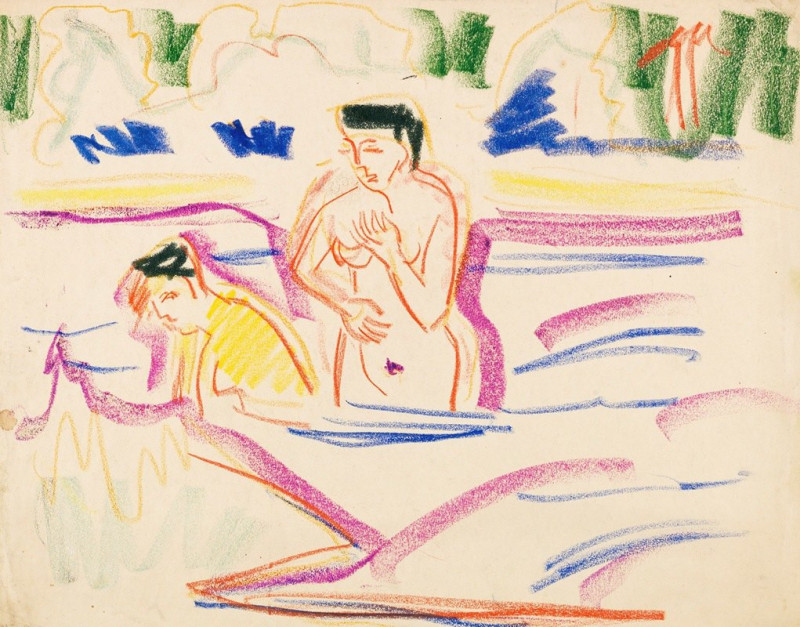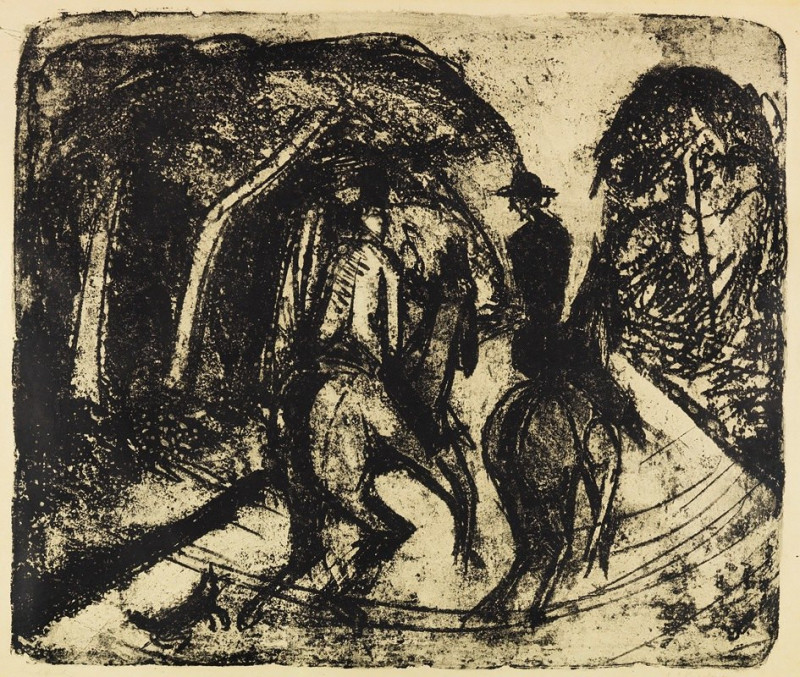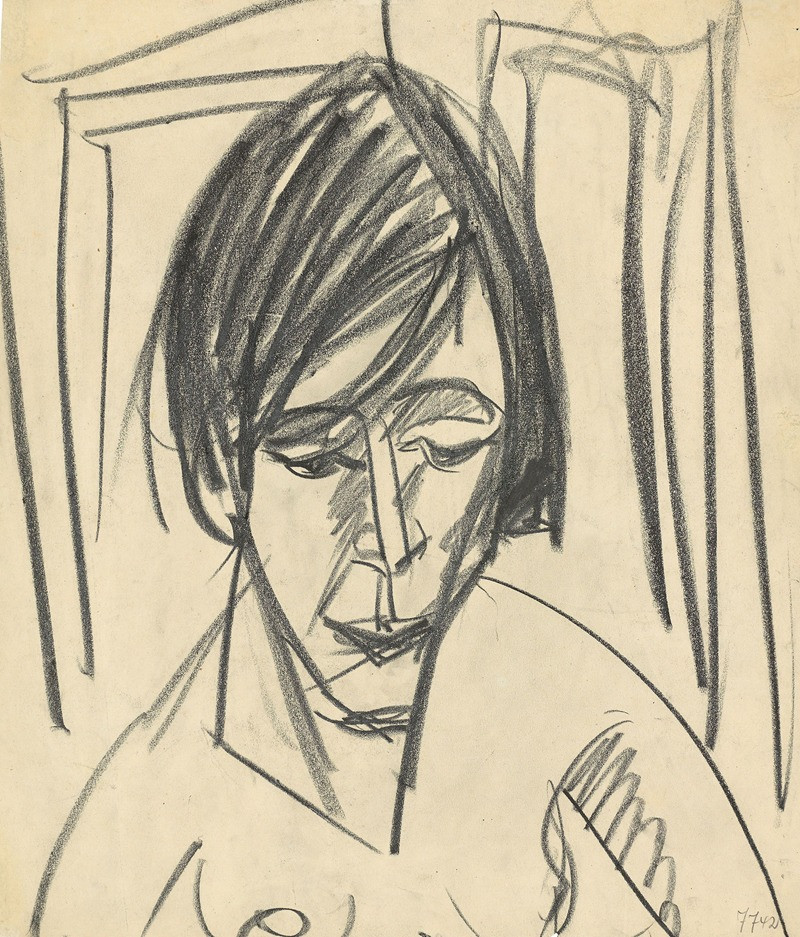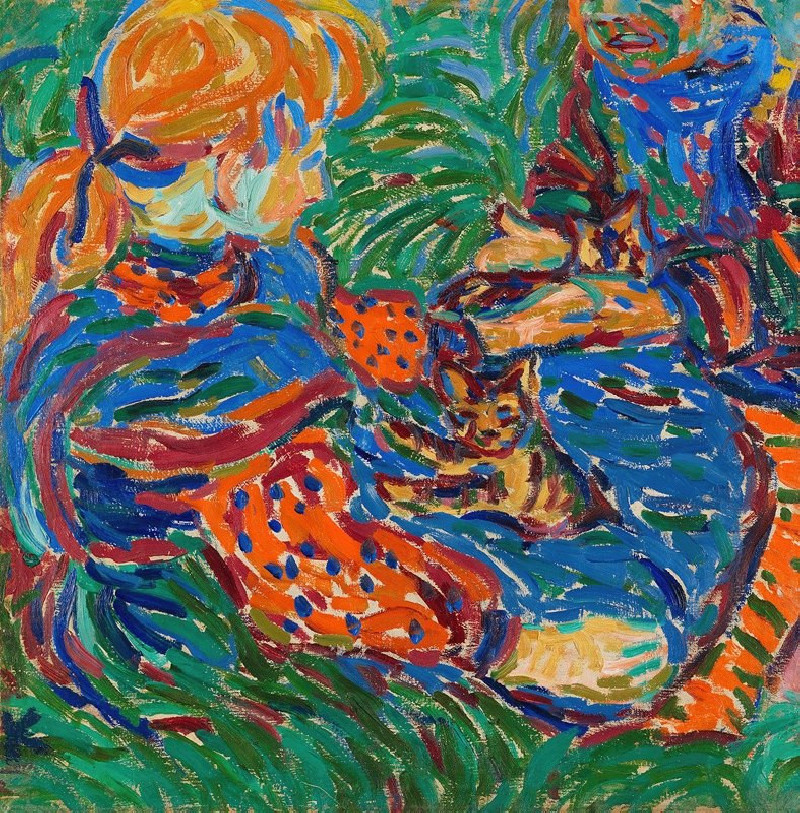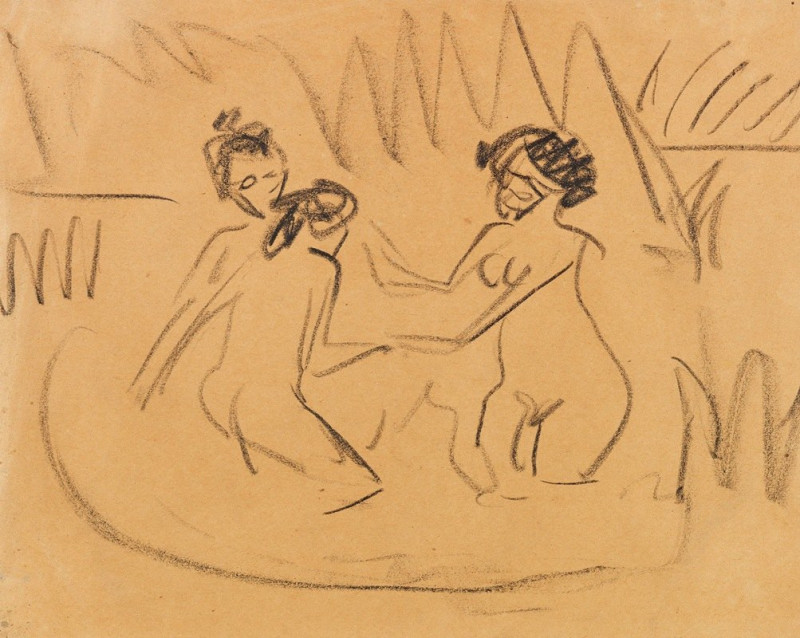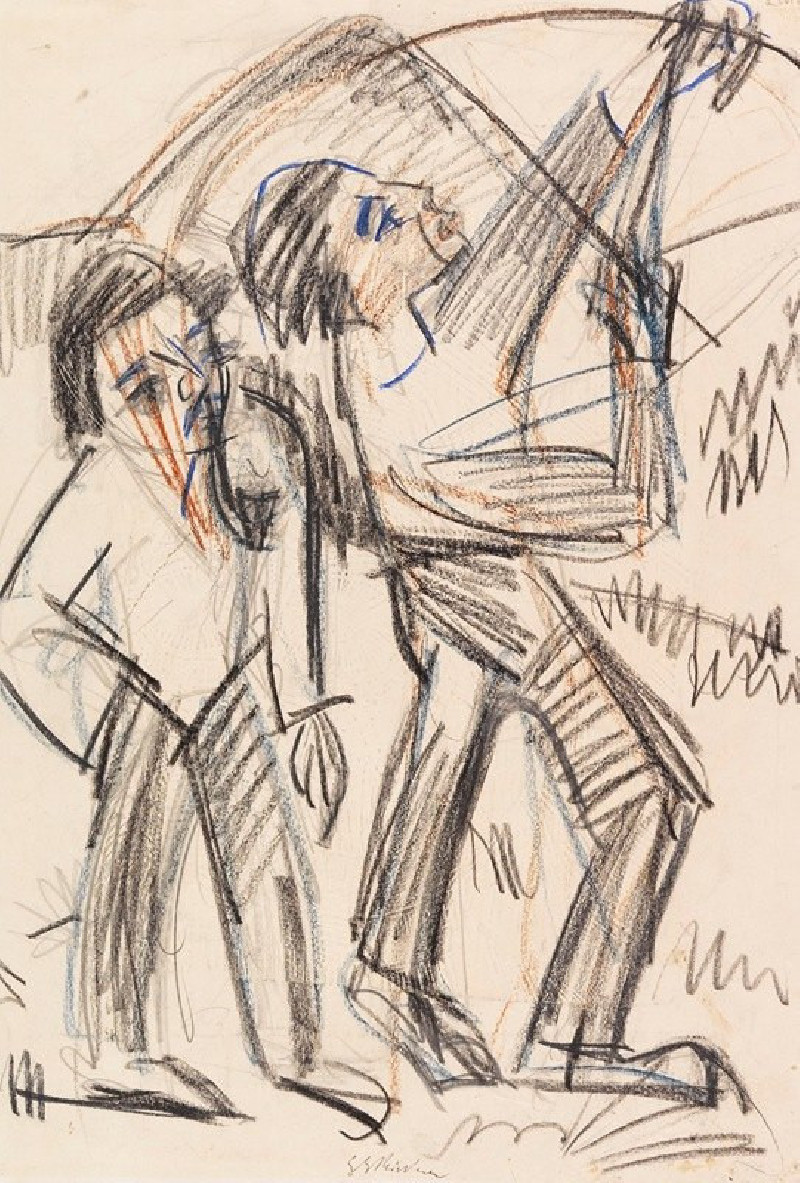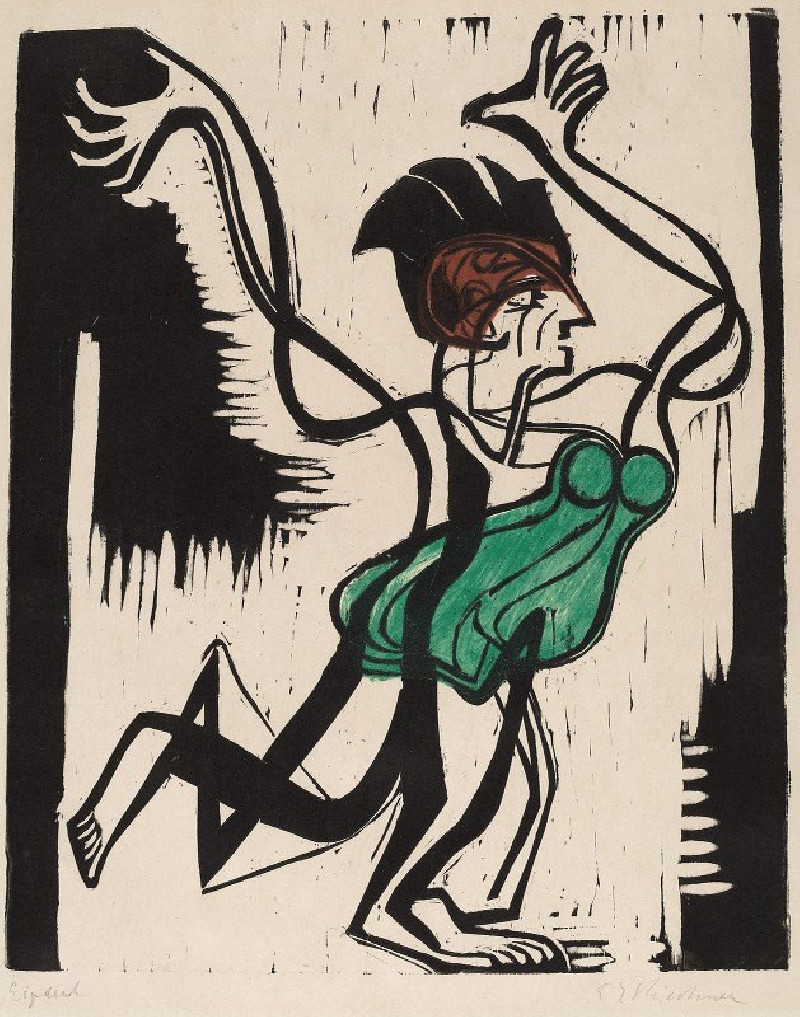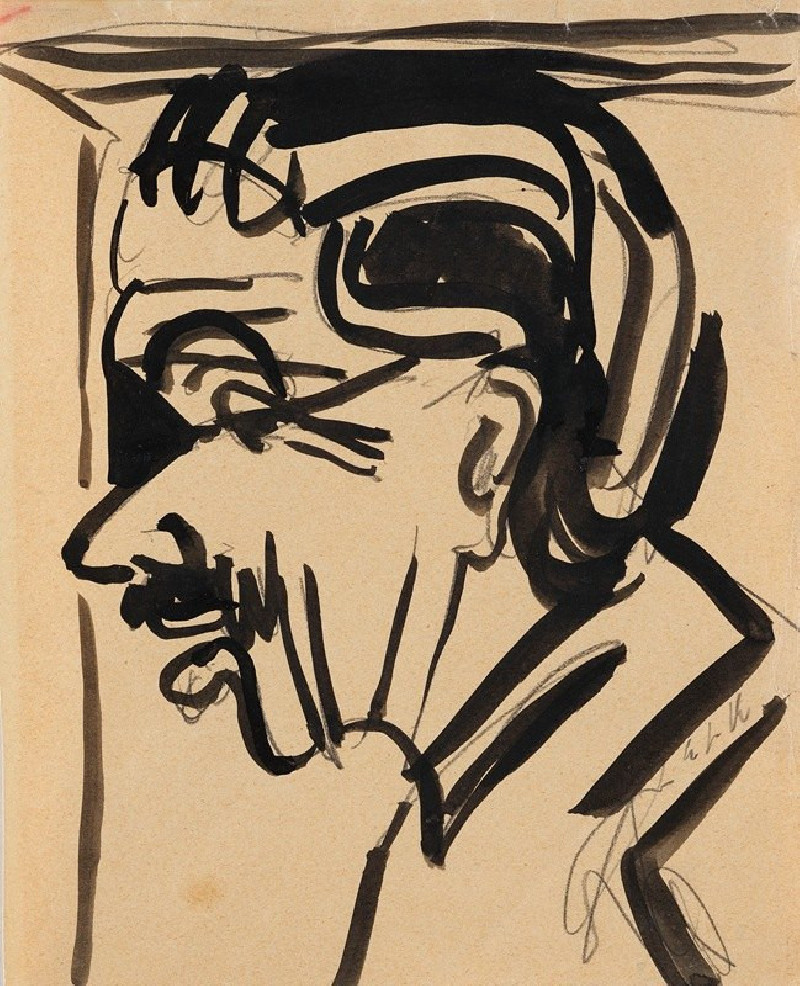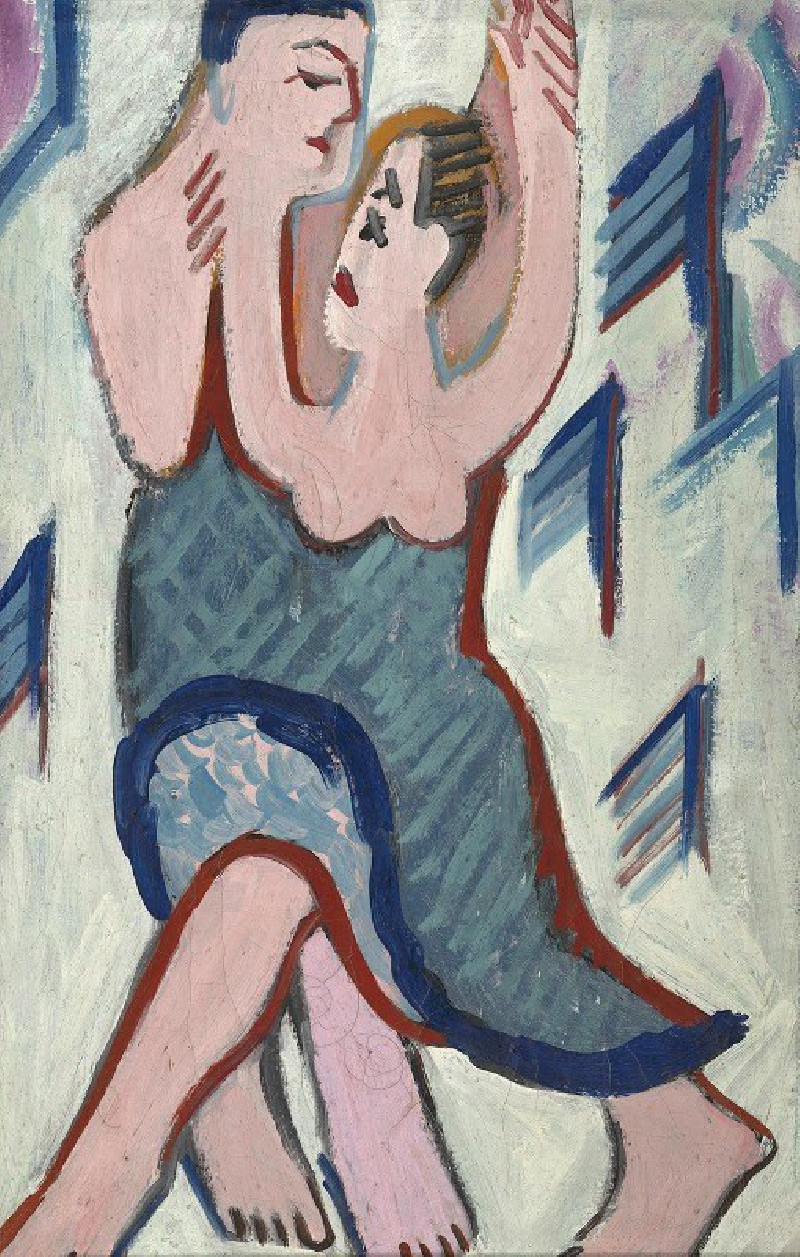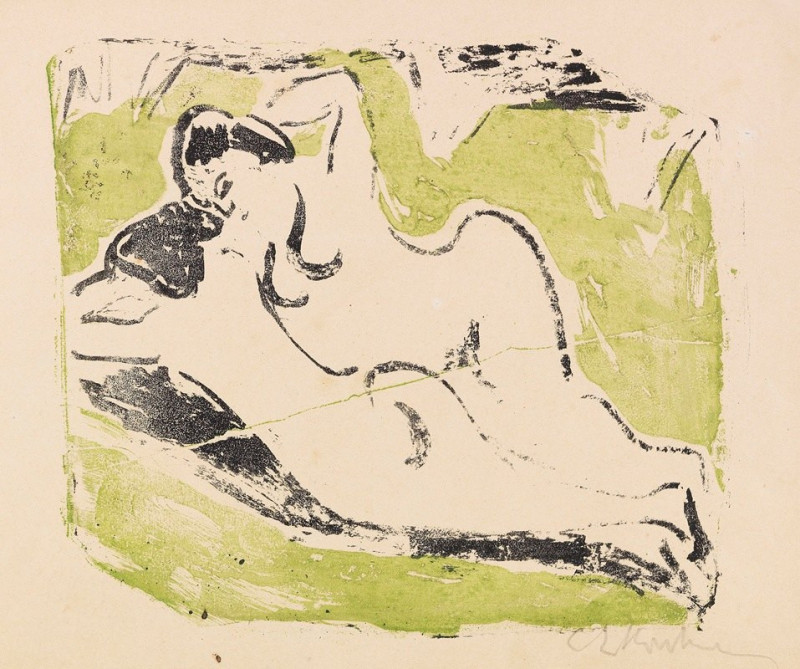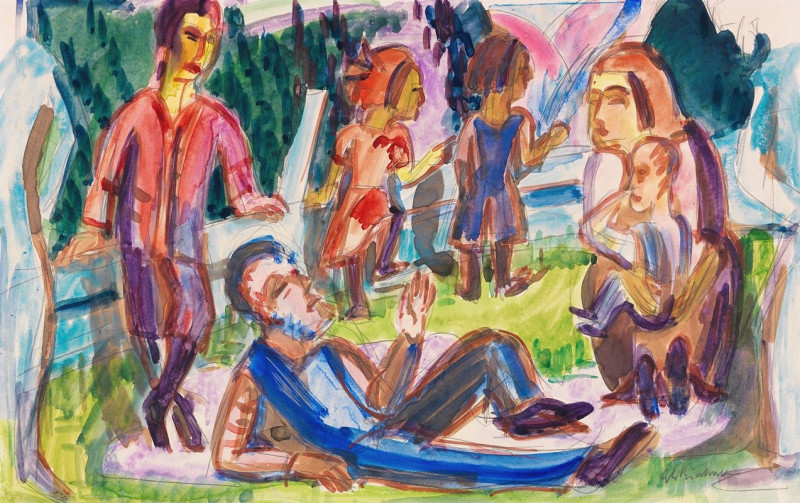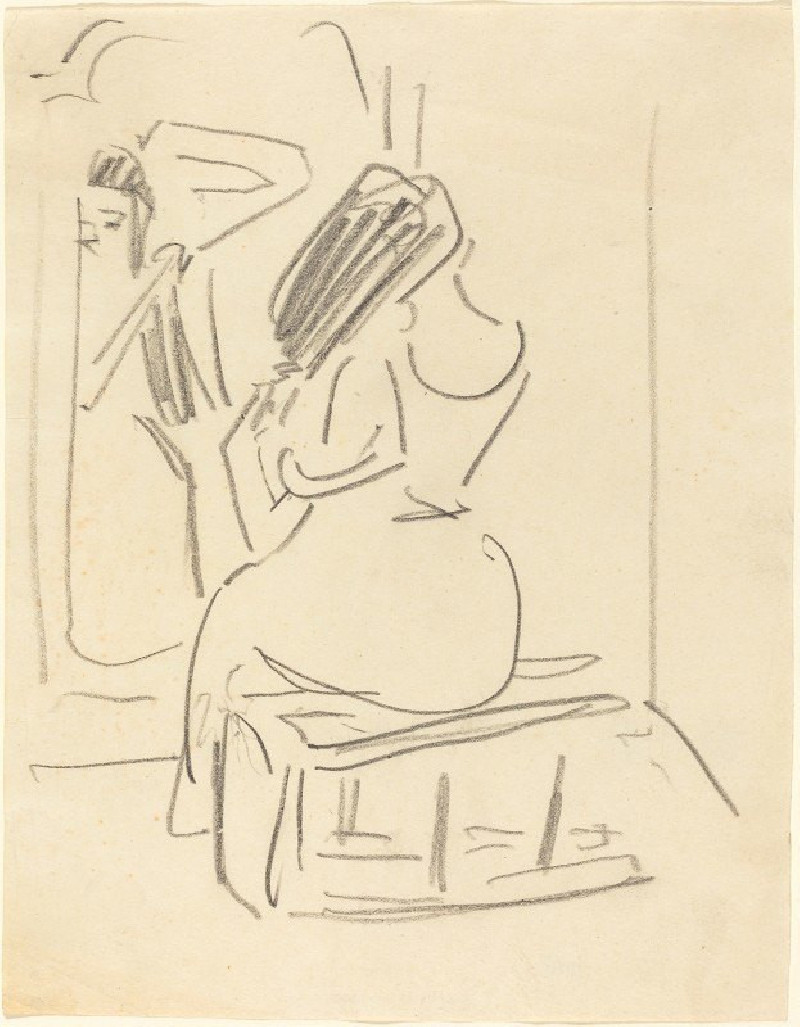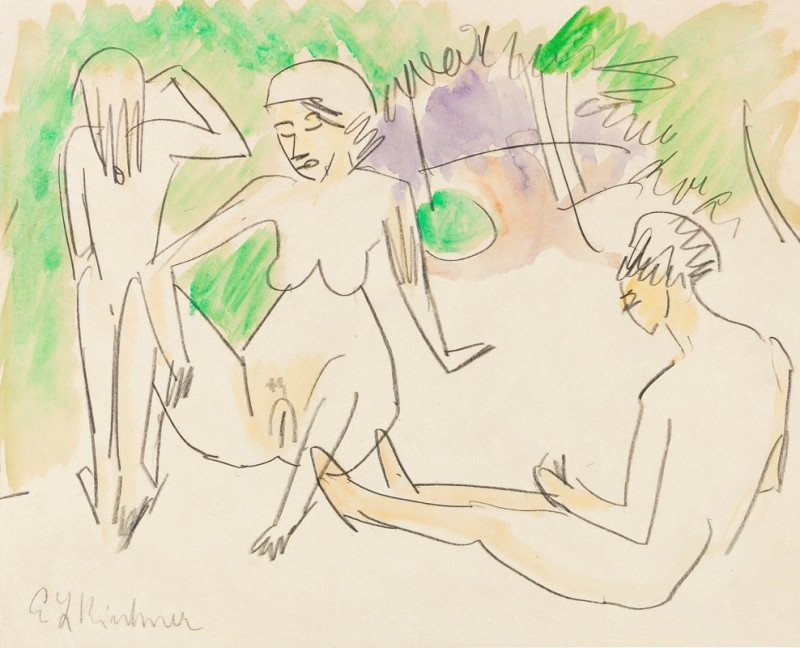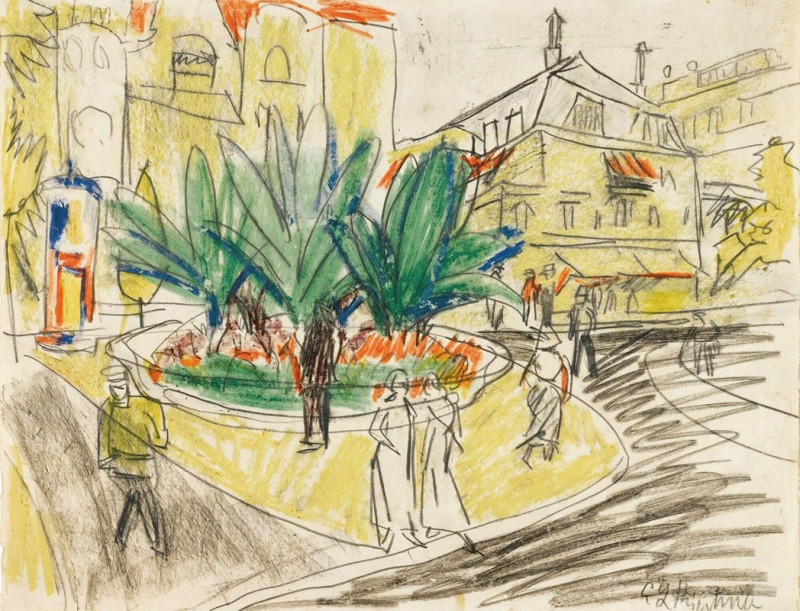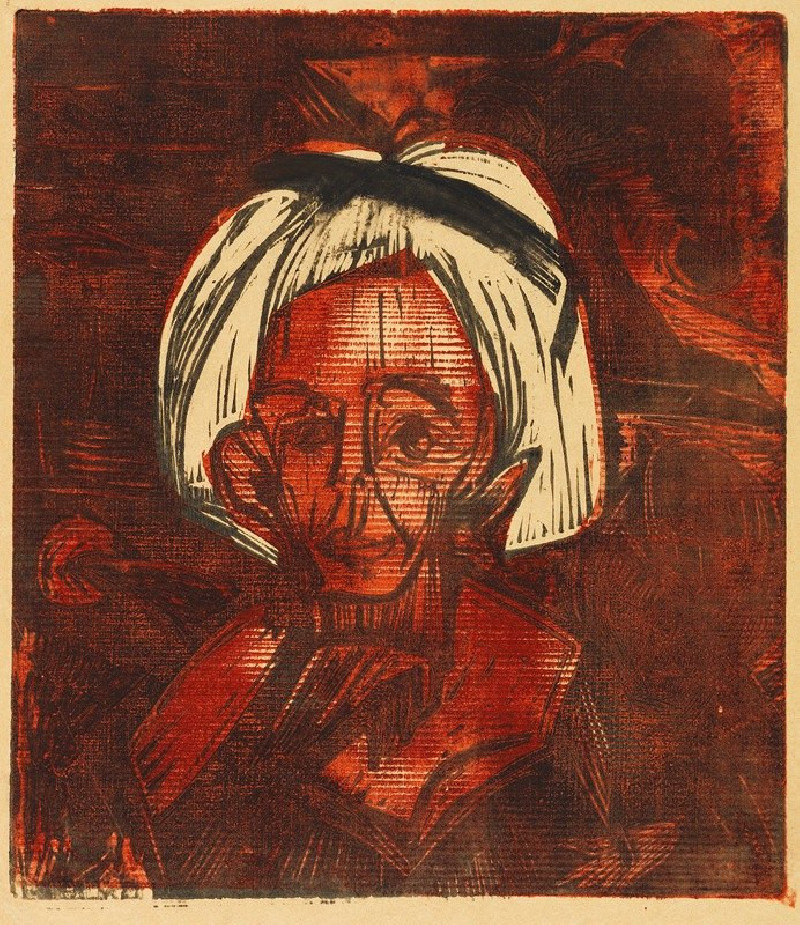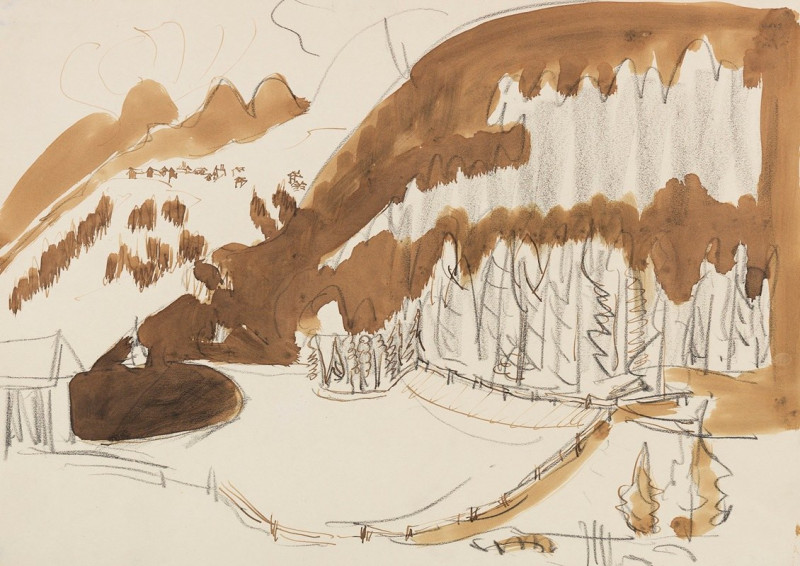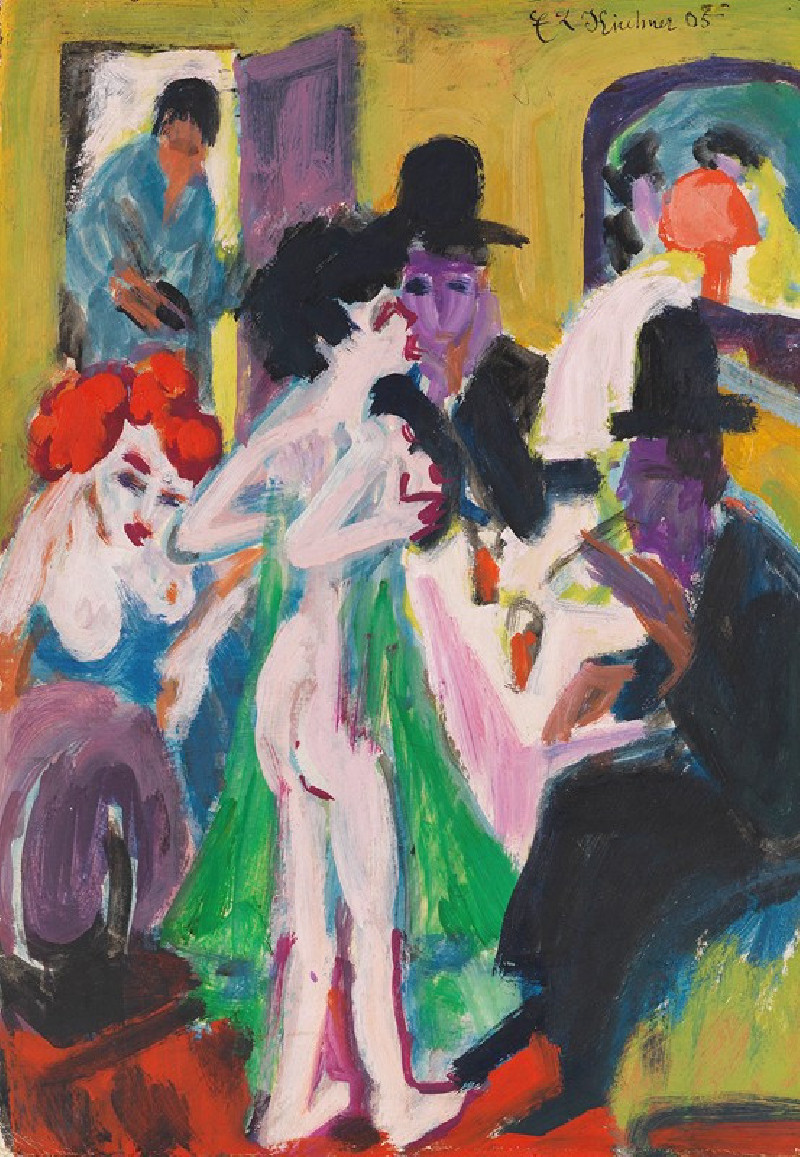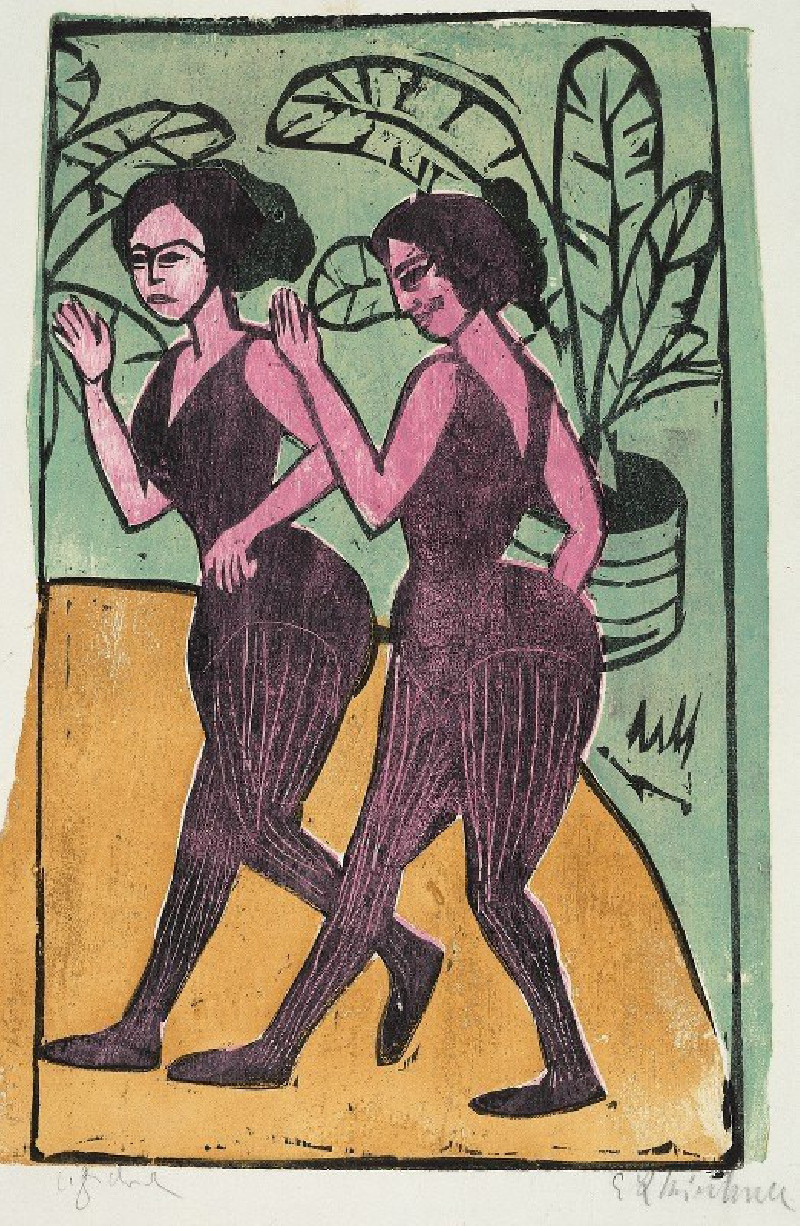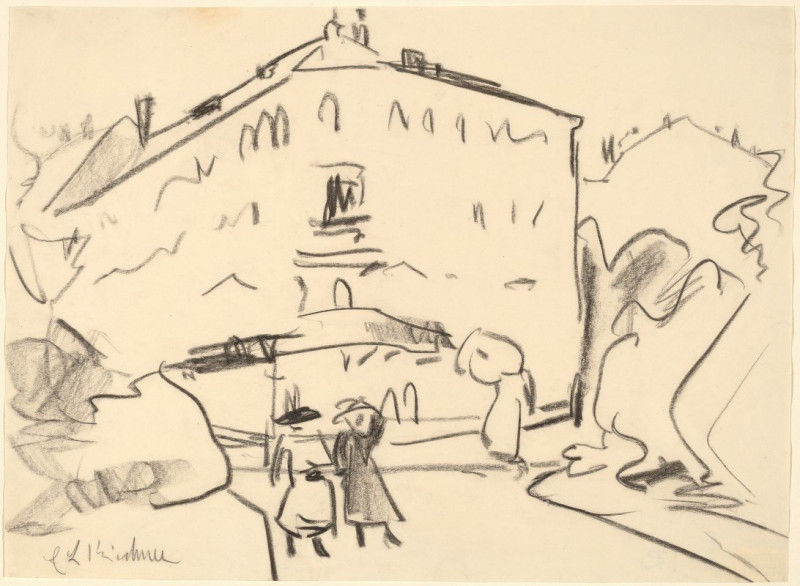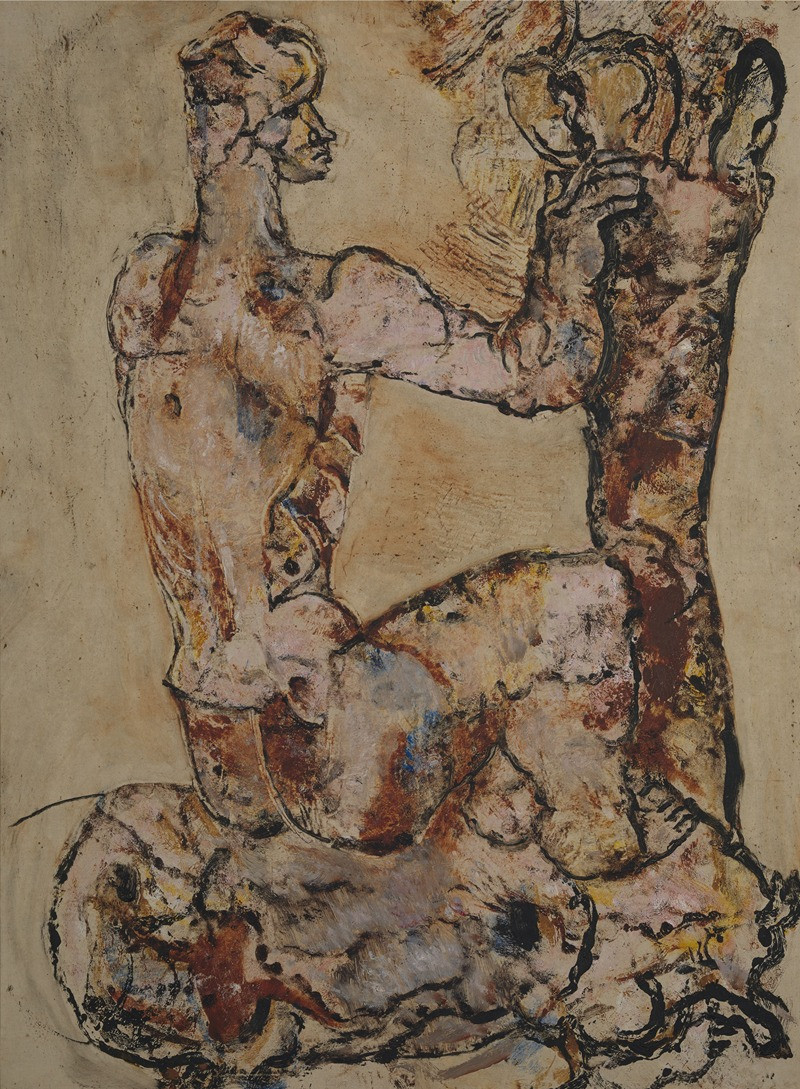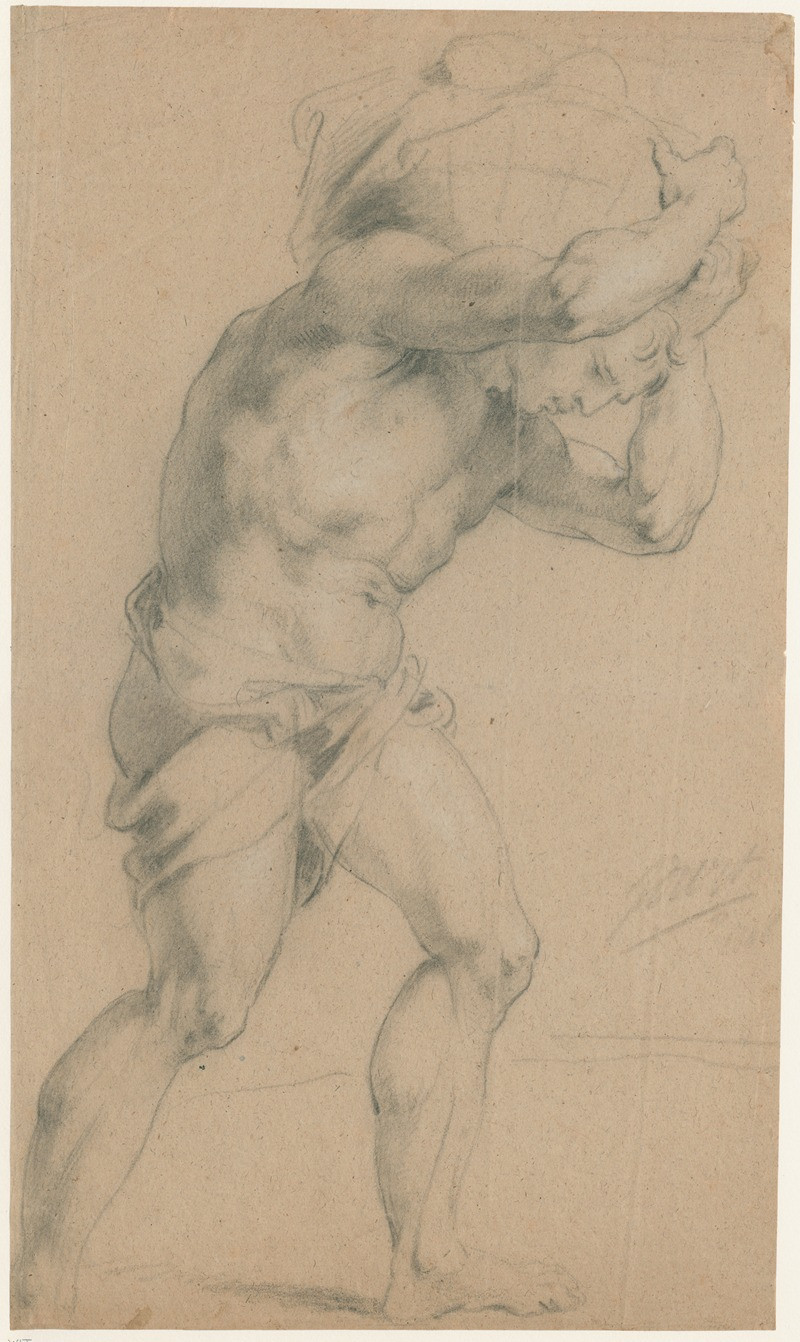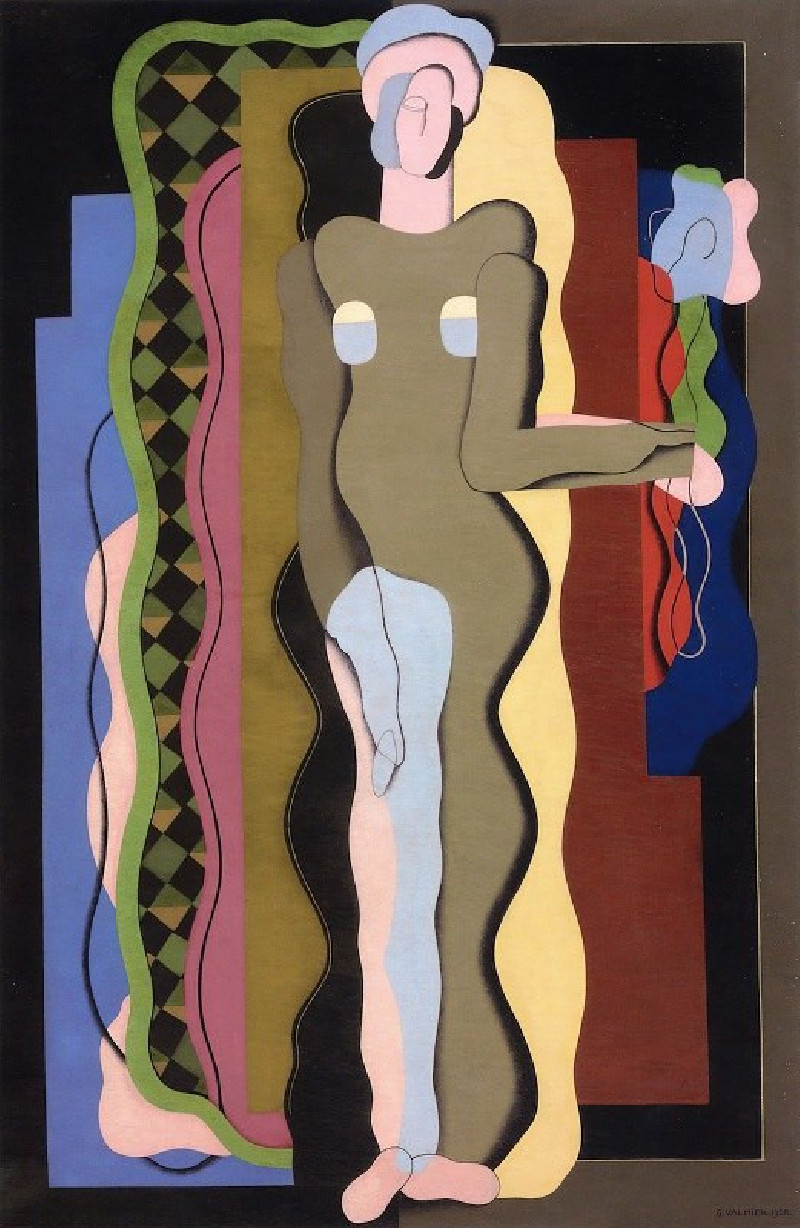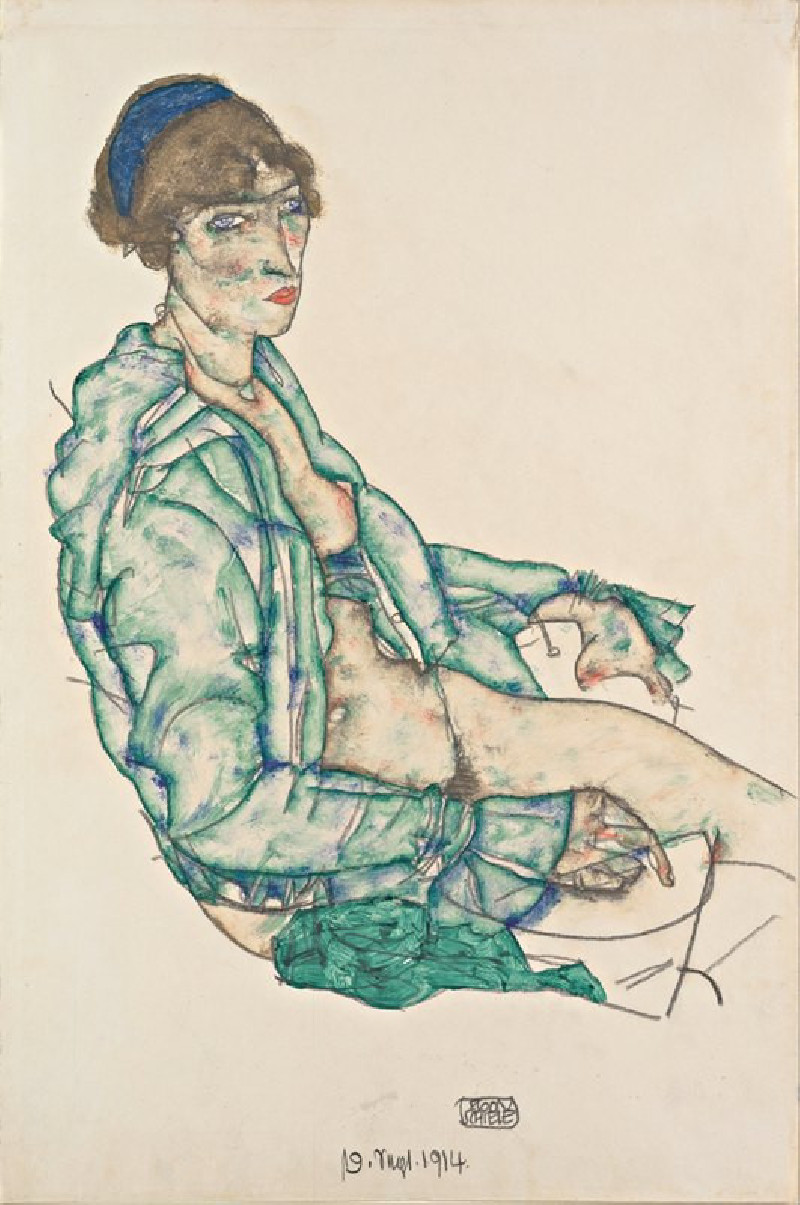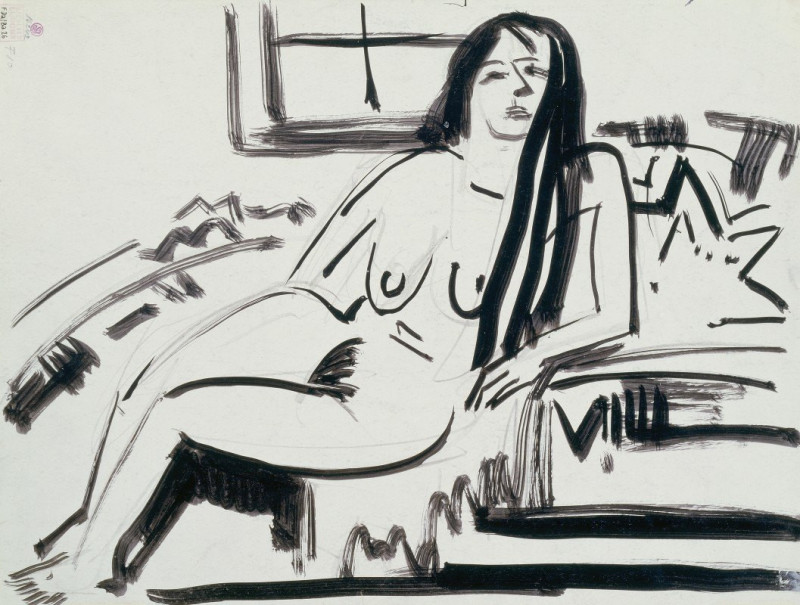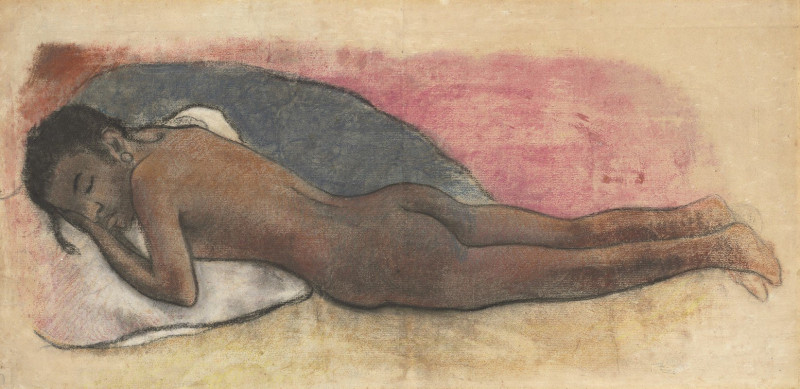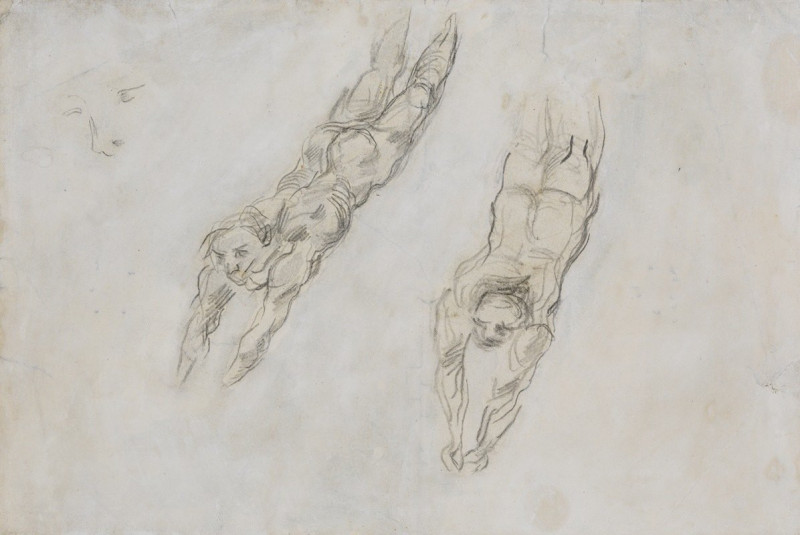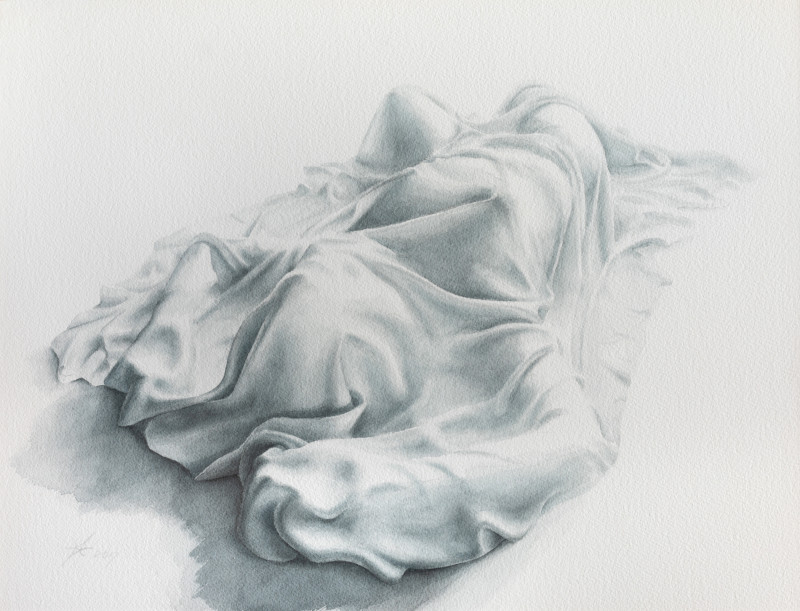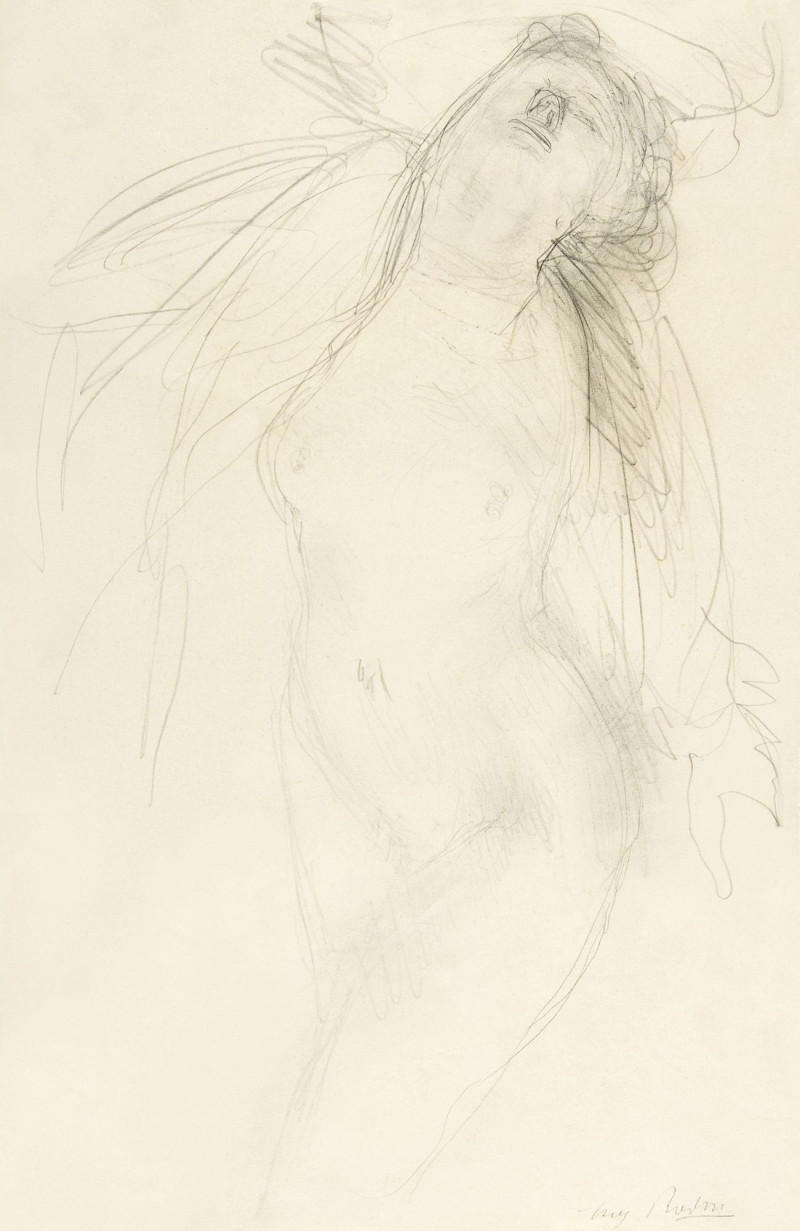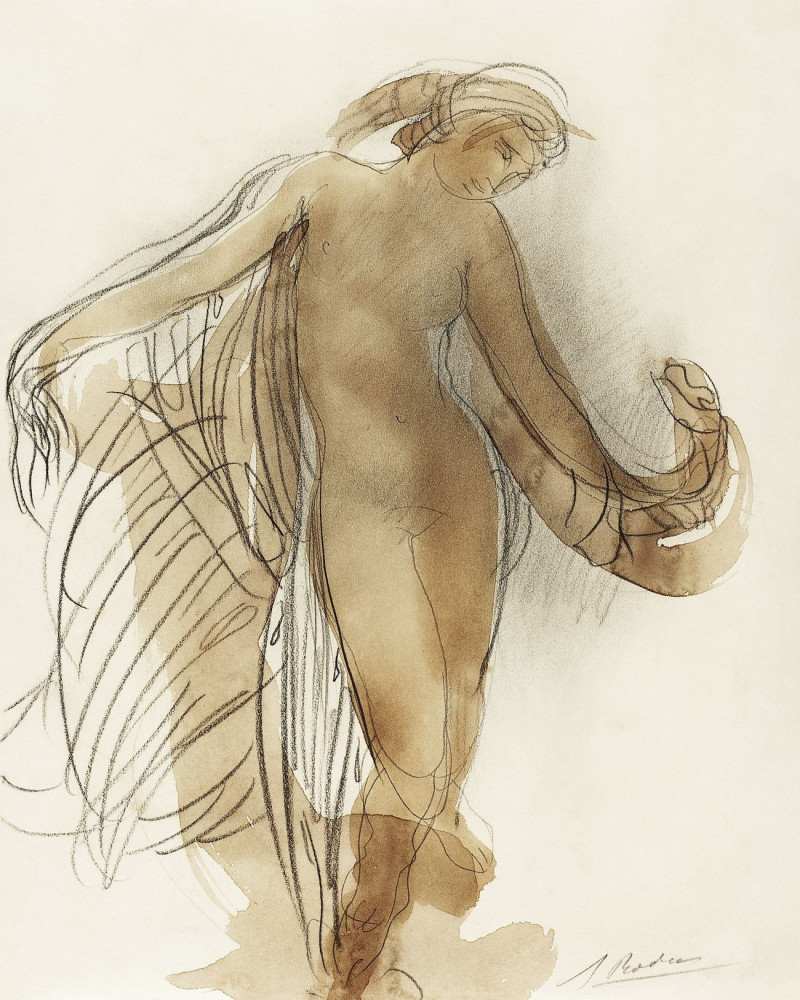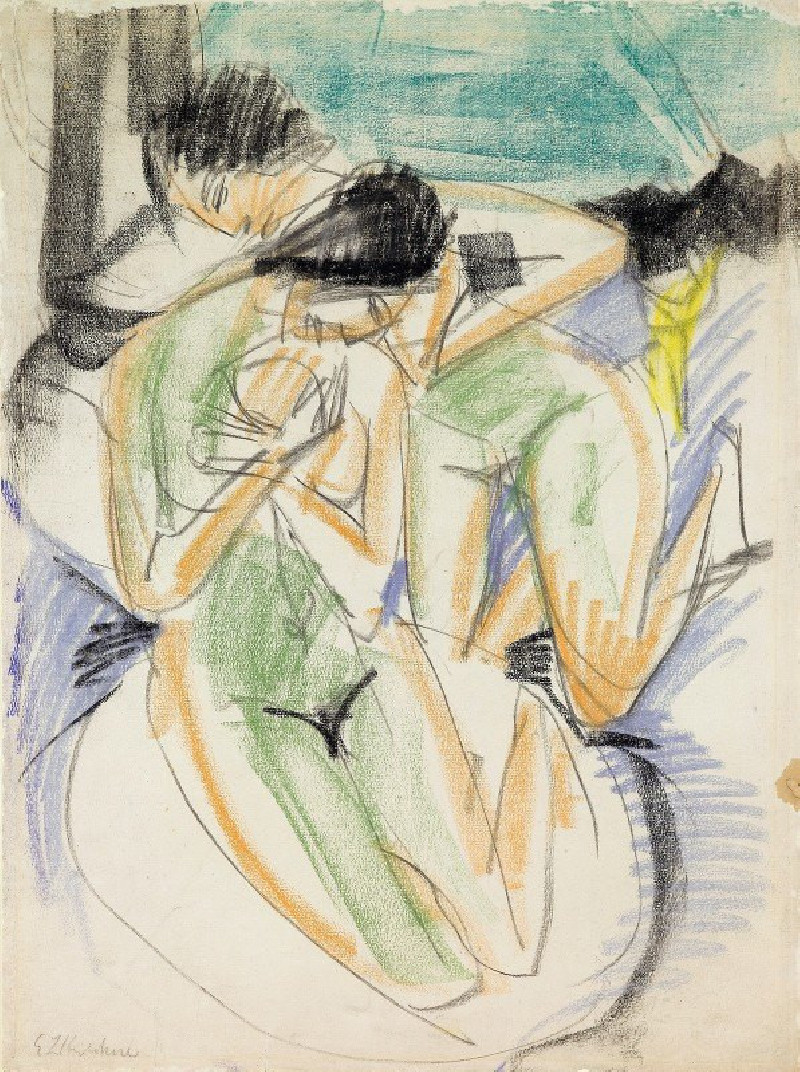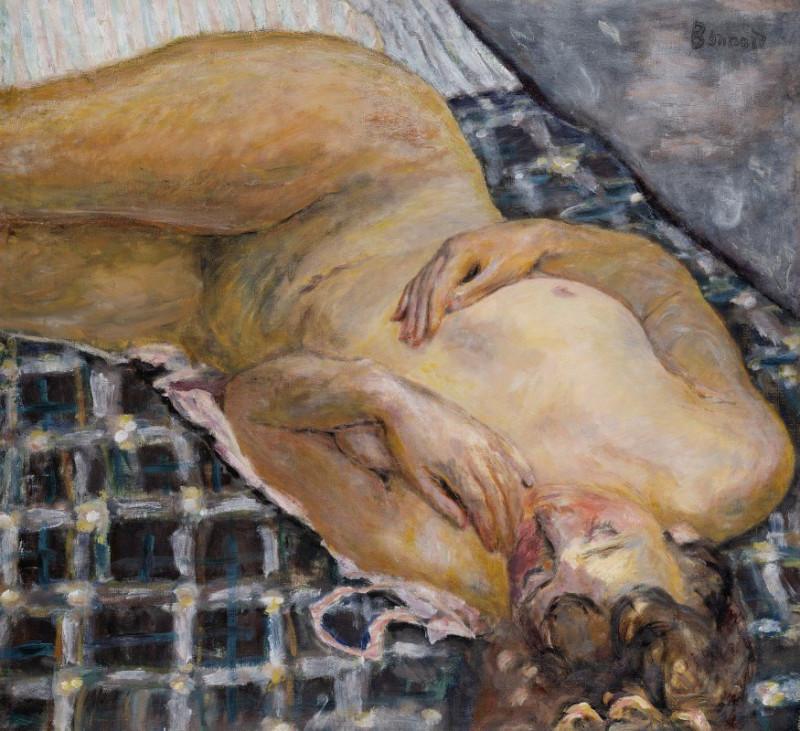Nude Dancer (1906)
Technique: Giclée quality print
Recommended by our customers
More about this artwork
On our website, we feature "Nude Dancer" by Ernst Ludwig Kirchner, an intriguing woodcut from 1906 that captures the artist's unique perspective on the human form and emotive expression. This work of art showcases a silhouette of a nude dancer framed by a striking, patterned border that emphasizes motion and the energetic tension inherent in the human body.The central figure, positioned in an almost cubist space, stretches dynamically within a geometric boundary, suggesting an explosion of movement confined within rigid limits. The contrasting use of black and white intensifies the visual impact, hollowing out the dancer's figure, which seems poised between emergence and retreat.Ernst Ludwig Kirchner's "Nude Dancer" remains a profound example of the Expressionist movement's push towards portraying emotional realism and psychological depth through stark, impactful lines and simplified forms.
Delivery
Returns
Ernst Ludwig Kirchner (1880–1938) was one of the most important German Expressionist painters. He was a co-founder of Die Brücke, a group of German expressionist artists formed in Dresden in 1905. Die Brücke and Kirchner took inspiration from Vincent Van Gogh and Edvard Munch, as well as African and Oceanic art. They used woodblock printing as a medium to showcase their signature style: flat, unrealistic images with vivid colors. The recurring themes in Kirchner's artworks included exotic cultures, faraway landscapes, self-portraits, dancers and Berlin street life. His paintings and prints effectively portrayed non-European cultures despite the fact that he never traveled outside of Europe.

